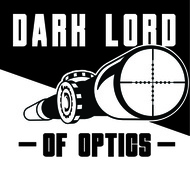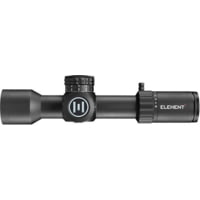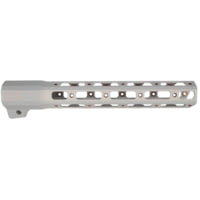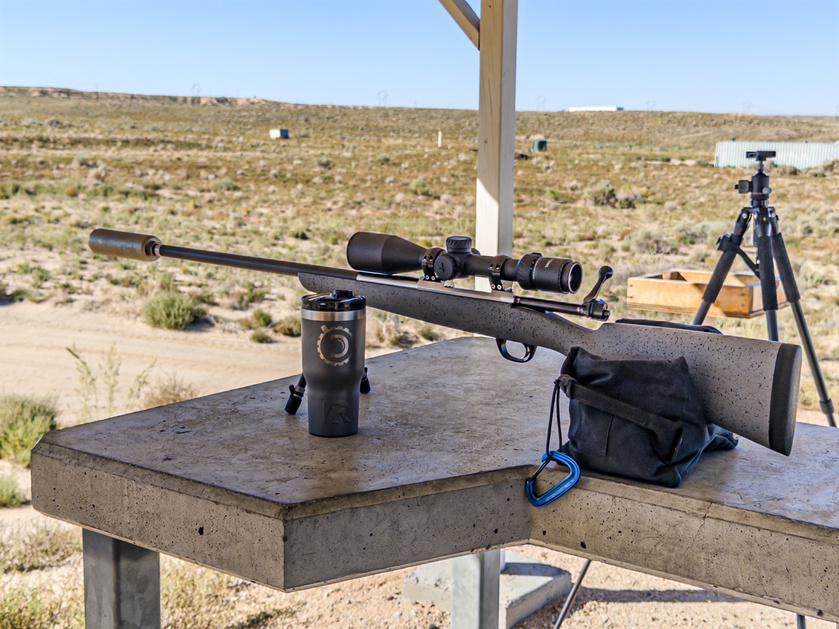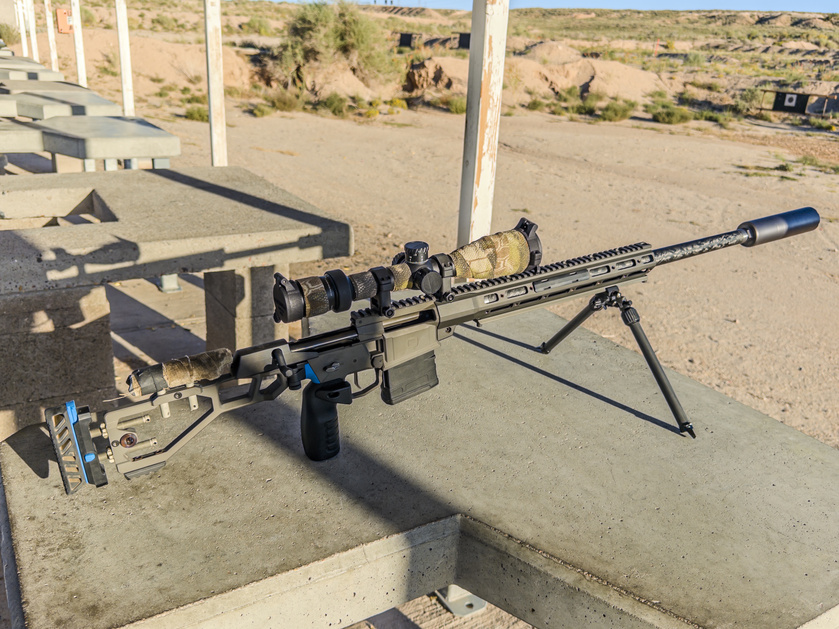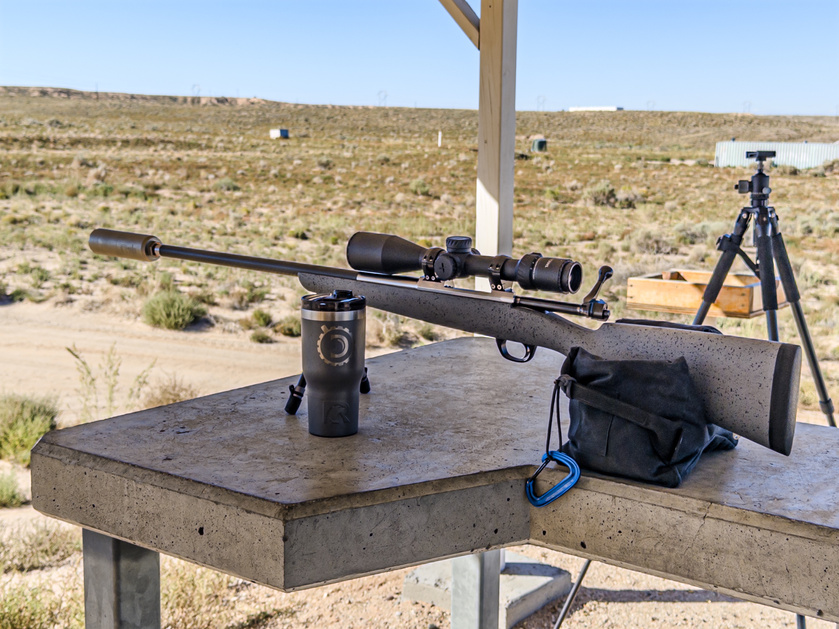Uncooled Thermal with a little bit of history
There is, as always, an entertaining discussion happening in the Hide, but I do not feel like getting into another protracted argument about comparative merits of different uncooled cores with people who do not know a whole lot about them. I mentioned that BAE is getting out of the uncooled core business. The responses were interesting.
Still, I thought some of the background on uncooled cores is worth rehashing since I was around for most of it and involved in some of it. Hopefully, you'll find it informative. If not, this post will fade like many others before it.
Here is a little history on uncooled cores from an eyewitness.
I was working at Raytheon when it was starting out and one of my first projects over there was trying to figure out how to calibrate early uncooled cores for a military project that eventually ended up going into ENVG.
The uncooled technology was first developed by Honeywell and after a while they licensed it to a bunch of people. Honeywell developed the technology, but did not do anything with it. Eventually, most of patent protections expired, but it is still a very specialized and expensive process to get into. Printing MEMS structures is not for the faint of heart and recooping the investment requires some serious volumes.
After some jockeying around between different companies and a few consolidations, an interesting situation developed with most of the market coalescing around several relatively large volume applications. Thermal riflescopes and clip-ons, in terms of volume, are roughly the size of a mosquito bite on the left testicle of an elephant, compared to what the manufacturers are looking for.
Originally, all uncooled cores still had thermoelectric coolers with the idea being that it is much easier to get this thing to work if the sensor temperature is stable. They were called uncooled because they were not cryogenically cooled to liquid nitrogen temperatures. There were still kinda cooled, but very mildly. Temperature stabilized was probably a better way of saying this. However, most of the volume applications cared about cost more than about image quality (within reason), so most manufacturers yanked the TECs out. BAE did it a bit later and when comparing BAE's temperature stabilized cores with everyone else's BAE had the advantage. Also, unlike almost everyone else, BAE was willing to sell imaging cores in low volumes, which is how Oasys and a bunch of other small players ended up using BAE cores. DRS could not be bothered. Raytheon was not set up for any of this stuff either, so they just signed a contract with Seek to deal with the non-military market and eventually ignored most of the uncooled world entirely. Ulis in France (which later merged with Sofradir, which later became Lynred), like BAE, was relatively easier to deal with for small companies, which is how we ended up with Pulsar making thermal scopes in Europe around Lynred cores. SCD makes them in Israel, but they aim at somewhat different stuff. There is some new stuff happening too in the US and Taiwan.
Ulis originally used amorphous silicon (aSi) for their uncooled detectors, while most of the US companies leaned toward Vanadium Oxid (VOX). aSI had better uniformity, while VOX had better sensitivity. The whole uncooled imaging business was such a radical departure from all other types of imaging technology that it took a serious learning curve to get it worked out. The military paid for that learning curve and provided some volumes to make the whole worthwhile. Then, other applications started coming up in the civilian world. None of them were particularly large in volume until the prices dropped enough for the automotive market to get interested, but that's a story for another day.
FLIR was an odd duck in that they liked civilian market, but did not want to do anything with gunstuff, until the first Armasight went and built a business using FLIR cores.
As an aside, technically, the whole FLIR uncooled business started as a different company called Indigo (it was across the street from Raytheon Vision Systems in Goleta where I worked). They were working on the whole uncooled thing in parallel with us and were acquired by FLIR. That's how FLIR ended up in the uncooled business.
What is even funnier is that a lot of the infrared camera stuff started in Santa Barbara because of Hughes Aircraft and Bill Parish. Back in the 1950s, Hughes Aircraft pissed off one of their more entrepreneurial employees, who left and started Santa Barbara Research Center with other former Hughes employees. SBRC bounced around for a little while, but ended up being acquired by Hughes Aircraft in the 1970s (I think). They were happily making missiles of all sorts. Missiles needed sensors. The bulk of the early technical stuff on the subject was done in Santa Barbara by three entities: SBRC (Santa Barbara Research Center), SBRS (Santa Barbara Remote Sensing) and later SBFP (Santa Barbara Focal Plane). The origin of Infrared imaging goes back to these three. SBRC was doing weapons related things. SBRS was more about space. Both of these were acquired by Hughes Aircraft, which was alter acquired by Raytheon. I briefly worked at SBRC that was eventually renamed Raytheon Vision. Systems. SBFP started a little later and was eventually acquired by Lockheed.
Goleta, just north of Santa Barbara, was the northern side of what we humorously called the "Infrared Valley". The southern side was Rockwell Science Center (RSC) in Thousand Oaks. I worked at RSC before Raytheon. A bit after I left, RSC was purchased by Teledyne. FLIR was also purchased by Teledyne, but much more recently. Infrared imaging cores, cooled and uncooled, are a big deal, so larger aerospace companies have bee buying smaller companies who develop these things.
To get these kinds of companies going, you need people with relevant expertise, which is where the whole Infrared Valley comes in. Small companies pop up in the same general area with good regularity because they can draw on a pool of people from large existing companies. Then, the get purchased by a larger company. After some lockout time, the founders go off and start something else. The latest such thing happened last week when Safran purchased Atollo Engineering. The two guys behind Atollo had a company before hand int he same general area that they sold to FLIR. The turned around, started Atollo and now sold that too. I know one of them relatively well and he is a very capable guy.
Still, they are all sorta following in the footsteps of Dr Bill Parish. He started a company called Amber Engineering to make infrared imaging marginally affordable (by government efforts) and his company was bought by Raytheon. After hanging around for a little while, he started another company called Indigo, that focused on uncooled imaging. That one was purchased by FLIR. He hung around for a little bit and then started Seek Thermal, which licensed the whole uncooled thing from Raytheon. He is still around, but not longer young. I did not know him well, but we crossed paths a few times. Brilliant guy.
Going back tot he original story... the guys who started Armasight were originally at ATN, but broke off and decided to do their own thing. They were sufficiently successful for FLIR to notice and decide that they want to play. FLIR bought Armasight and relatively quickly got in trouble over some export issues. The details are not germane to this story, but FLIR paid a very large fine and canned the whole "thermal scopes for civilians thing". The did have quite a lot of inventory on hand though which did eventually end up in the market by very odd means.
The important part here is that none of the large thermal core manufacturers ever gave a rat's behind about civilian weapon sight applications (not enough volume and not enough margin) unless someone else did the hard work in the beginning.
The high volume applications, kept pushing the market toward cheaper thermal cores which required digital readouts, wafer level packaging and a variety of other niceties. None of those things helped image quality. Sometimes, image quality got worse. The price did go down by quite a lot.
BAE did not do any of that. They kept making the same cores with analog readouts and occasional changes in pixel pitch. They got the image quality up to a very high standard, but could not compete on price in large volume applications. All of their competitors who invested into newer technologies eventually got the image quality back up without getting the price back up.
Newer military programs kept on going to DRS. Civilian market alone is not enough to keep making thermal cores. BAE announced that they will be getting out of this business. For a little while the government tried to keep BAE uncooled in business by splitting programs, but it looks like BAE decided they can't make money in this business any more.
In parallel, the Chinese government got the manufacturing of uncooled cores up and running. It started with a couple of entities. One copied FLIR architecture and kept on tweaking it. The other copied ULIS/Sofradir/Lynred and kept on tweaking it. Initially, I think the French went and helped them set it up (for a lot of money). China was trying to compete militarily with the US, which means you need pretty high performing infrared imagers for missile seekers (or missile guidance systems if you prefer that terminology). US slapped all of this stuff with export controls, which made other companies developed homegrown manufacturers. Cryogenically cooled infrared was beyond Chinese capabilities, but uncooled infrared technology could be bought or stolen more easily. CCP invested heavily in it. They got a couple of huge facilities running. When you mass produce these things, there is statistical variation in performance. Only 2-3% of what they made in China was good enough for missile seekers. The rest, rather than being discarded, was offered to the civilian market.
That's how we ended up with inexpensive uncooled thermal. Modern chinese cores have rather good image quality at a decent price. FLIR, Dalsa, Seek, DRS got their prices down into something reasonable too. BAE has good image quality, but did not invest into their cost structure. That's why they are getting out of the uncooled business.
PS. It is late and I am shooting a match tomorrow. I apologize for the speling and grammar errors. I'll proofread it all tomorrow when I get home.

